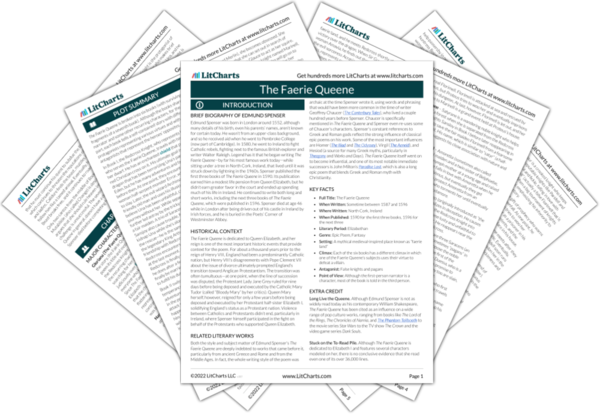Una, despite her physical weakness, is a powerful force of faith, and here her strong faith literally saves Redcross’s life. Although the poem is perhaps ultimately sexist in the way it portrays most women as weak or conniving, there are exceptional characters and moments, like this one, that complicate this portrayal.
